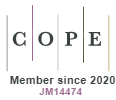Information Technology Project Portfolio and Strategy Alignment Assessment Based on Data Envelopment Analysis
DOI:
https://doi.org/10.5585/gep.v3i2.66Palavras-chave:
Project Portfolio Assessment, Strategy Alignment, Strategy Maps, Data Envelopment Analysis.Resumo
Recent researches have shown that companies face considerable difficulties in assessing the strategy value contribution of Information Technology (IT) investments. One of the major obstacles to achieving strategy alignment is that organizations find extremely difficult to link and quantify the IT investments benefits with strategic goals. The aim of this paper is to define an approach to assess portfolio-strategy alignment. To this end a formal specification of Kaplan and Norton Strategy Map is developed utilizing Unified Modeling Language (UML). The approach uses the Strategy Map as a framework for defining the portfolio value contribution and Data Envelopment Analysis (DEA) is used as the methodology for measuring efficiency of project portfolios.
DOI:10.5585/gep.v3i2.66
Referências
Amado, C., Santos, S., & Marques, P. (2012). Integrating the Data Envelopment Analysis and the Balanced Scorecard approaches for enhanced perfomance assessment. Omega -The International Journal of Management Science , 40, 390-403.
Asosheh, A., Nalchigar, S., & Jamporazmey, M. (2010). Information technology project evaluation: An integrated data envelopment analysis and balanced scorecard approach. Expert Systems with Applications -An International Journal , 37, 5931-38.
Banker, R., Charnes, A., & Cooper, W. (1984). Some models for estimating technical and scale inefficiencies in Data Envelopment Analysis. Management Science , 30, 1078-92.
Booch, G., Jacobson, I., & J., R. (1998). The Unified Modeling Language User Guide. MA: Addison-Wesley Longman.
Charnes, A., Cooper, W., & Rhodes, E. (1978). Measuring the efficiency of decision making units. European Journal of Operational Research , 2, 428-44.
Checkland, P. (1999). Soft systems methodology in action. New Jersey: John Wiley & Sons.
Cook, W., & Seiford, L. (2009). Data Envelopment Analysis (DEA) -thirty years on. European Journal of Operational Research , 192, 1-17.
Cooper, W., & Seiford, L. (2004). Handbook on Data Envelopment Analysis. New York: Kluwer Academic Publishers.
Cooper, W., Seiford, L., & Tone, K. (2006). Introduction to Data Envelopment Analysis and its Uses. New York: Springer Science+Business Media.
Davern, M., & Kauffman, R. (2000). Discovering value and realizing potential from IT investments. Journal of Management Information Systems , 16 (4), 121-44.
Davern, M., & Wilkin, C. (2010). Towards and integrated view of IT value measurement. International Journal of Accounting Information Systems , 11, 42-60.
Eilat, H., Golany, B., & Shtub, A. (2006). Constructing and evaluating balanced portfolios of R&D projects with interactions: A DEA based methodology. European Journal of Operational Research , 172 (3), 1018-39.
Eilat, H., Golany, B., & Shtub, A. (2008). R&D projects evaluation: An integrated DEA and balanced scorecard approach. Omega , 36 (5), 895-912.
García-Valderrama, T., Muleno-Mendigirri, E., & Revuelta-Bordoy, D. (2009). Relating the perspectives of the Balanced Scorecard for R&D by means of DEA. European Journal of Operational Research , 196, 1177-89.
Goh, K., & Kauffman, R. (2006). Measuring the Potential and Realized Value of IT. WISE.
Kaplan, R. (2010). Conceptual Foundations of the Balanced Scorecard. Working paper . Harvard Business School.
Kaplan, R., & Norton, D. (2000). Cuadro de Mando Integral. Barcelona: Ediciones Gestión 2000.
Kaplan, R., & Norton, R. (2004). Strategy Maps. Converting Intangible Assets into Tangible Outcomes. Boston: Harvard Business School Press.
Kapplan, J. (2005). Strategic IT Portfolio Management.Governing Enterprise Transformation. Lexington: PRTM.
Maizlish, B., & Handler, R. (2005). IT Portfolio Management. Step-by-Step. Unlocking the Business Value of Technology. New Jersey: John Wiley & Sons.
McFarlan, F. (1981). Portfolio approach to information systems. Harvard Business Review , 142-150.
Nauyalis, C., & Carlson, M. (2010). Portfolio pain points -New study reveals that componiesa re suffering from a lack of streamlined product portfolio management processes. PDMA Visions Magazine , 13-18.
Rickards, R. (2003). Setting benchmarks and evaluating Balanced Scorecards with data envelopment analysis. Benchmarking: An International Journal , 10, 226-45.
Rubinstein, D. (2007). Standish Group Report: There`s Less Development Chaos Today. Software Development Times .
Sanchez, H., Benoit, R., & Pellerin, R. (2008). A Project Portfolio Risk-Opportunity Identification Framework. Project Management Journal , 97-209.
Sánchez, M., & Mellado, V. (2006). Business Modeling. International Conference of Modeling and Simulation in Economic and Management (MSEM06). Bahía Blanca.
Sánchez, M., & Mellado, V. (2005). Implementing the Balanced Scorecard: A Supermarket Chain's Experience. Second Argentine Symposium on Information System (ASIS2005). Rosario: SADIO.
Sánchez, M., & Mellado, V. (2004). Integración formal del modelo de negocio con el Tablero de Comando. (F. Rotstein, Ed.) Escritos Contables , 45, 119-128.
Turban, E., Leidner, D., McLean, E., & Wetherbe, J. (2006). Information Technology for Management. Hoboken, NJ: John Wiley & Sons, Inc.
Wang, J., Lin, W., & Huang, Y. (2010). A perfomance-oriented risk management framework for innovative R&D projects. Technovation , 601-611.
Ward, J., & Peppard, J. (2002). Strategic Planning for Information Systems. John Wiley & Sons, Ltd.
Weill, P., Woerner, S., & McDonald, M. (2009). Managing the IT Portfolio (update circa 2009): Infraestructure Dwindling in the Downturn. CISR Research Briefing , IX (8).
Downloads
Publicado
Como Citar
Edição
Seção
- Resumo 216
- PDF (English) 101







